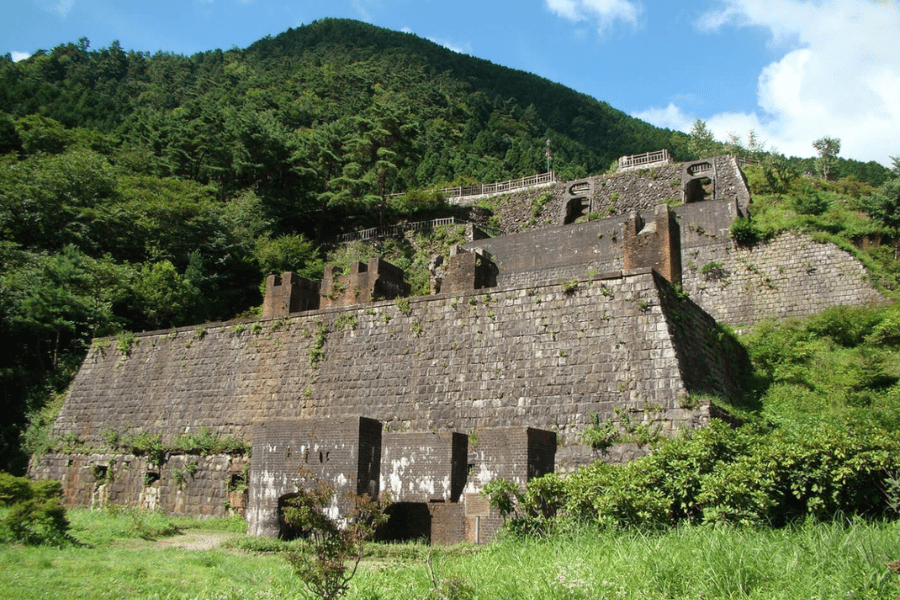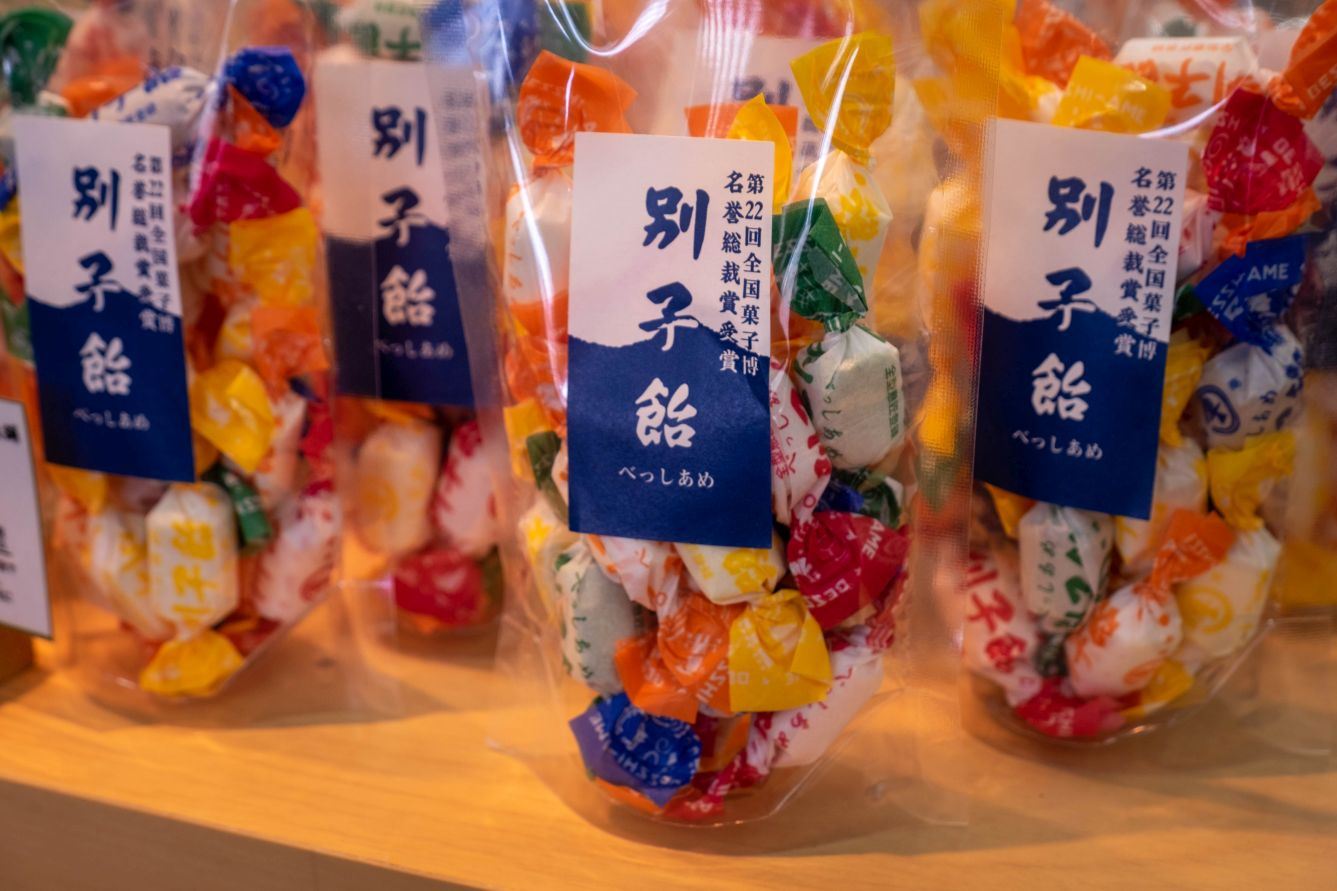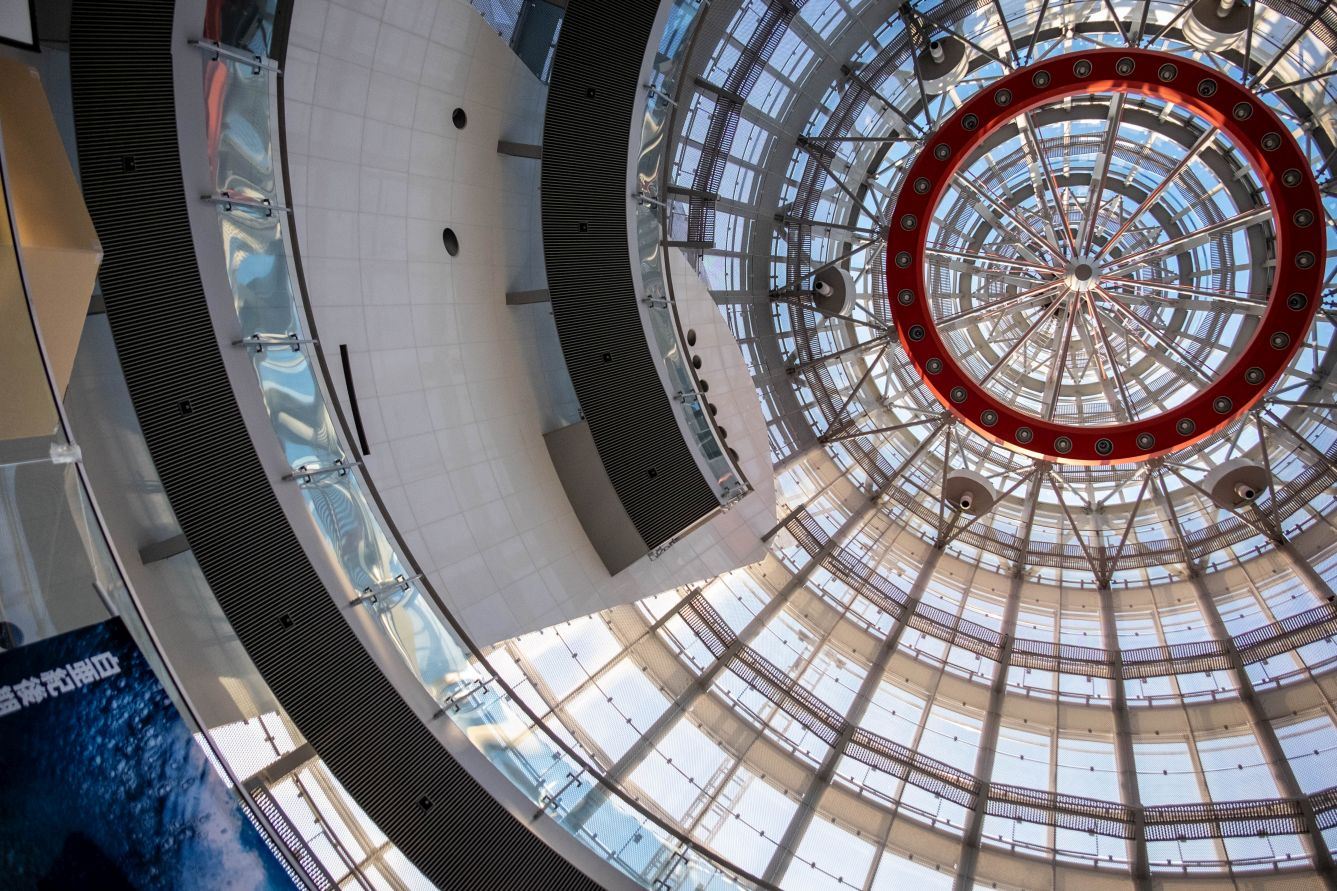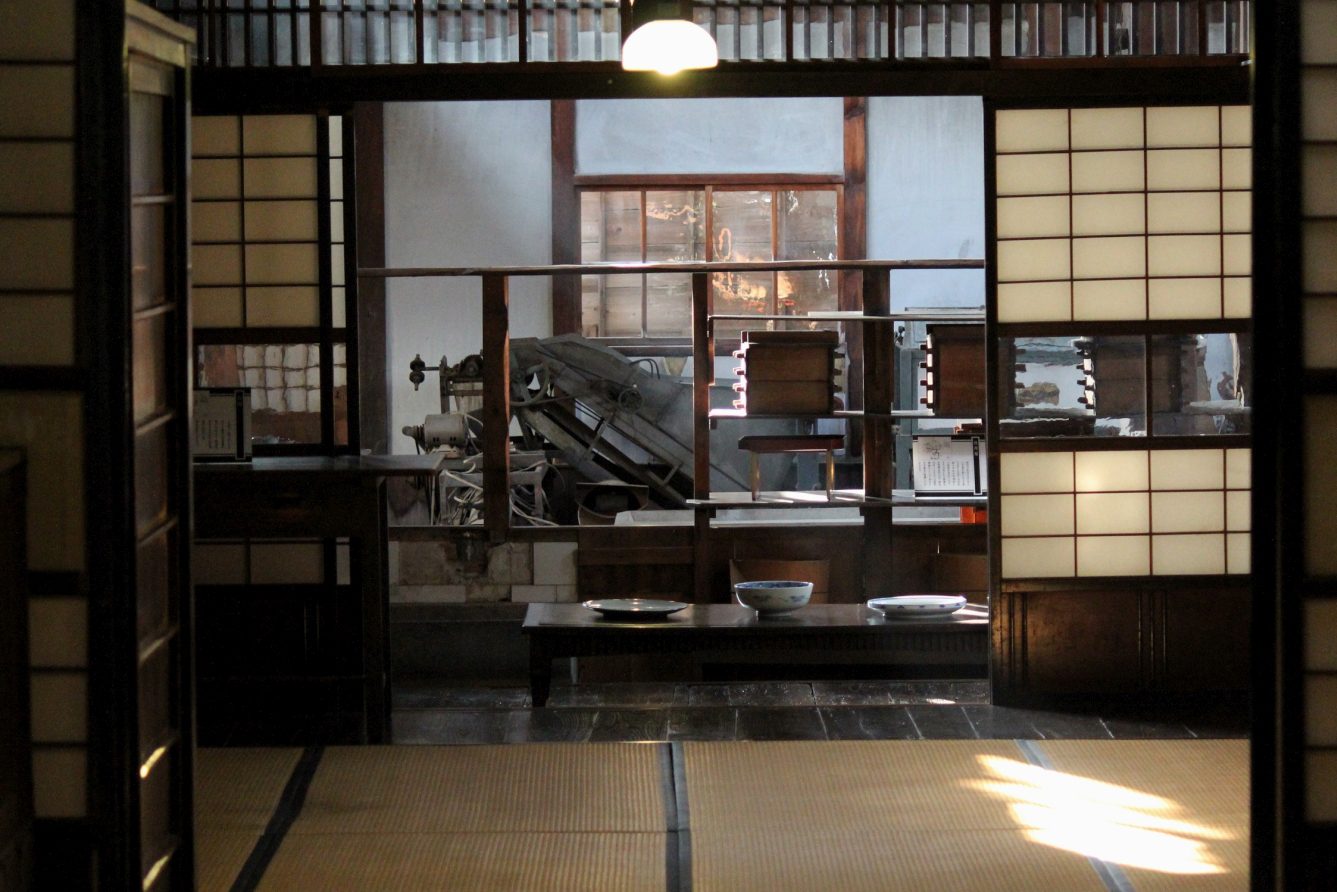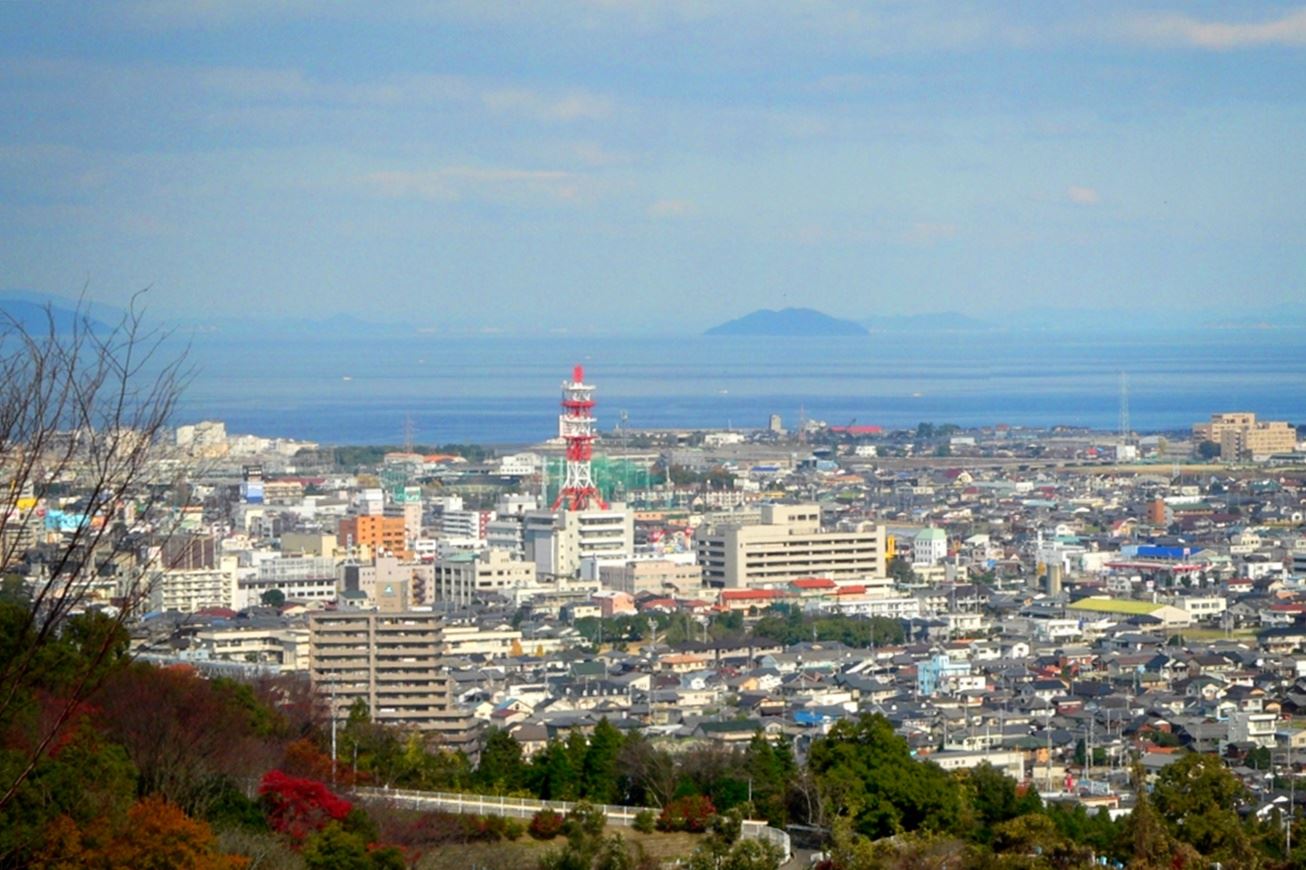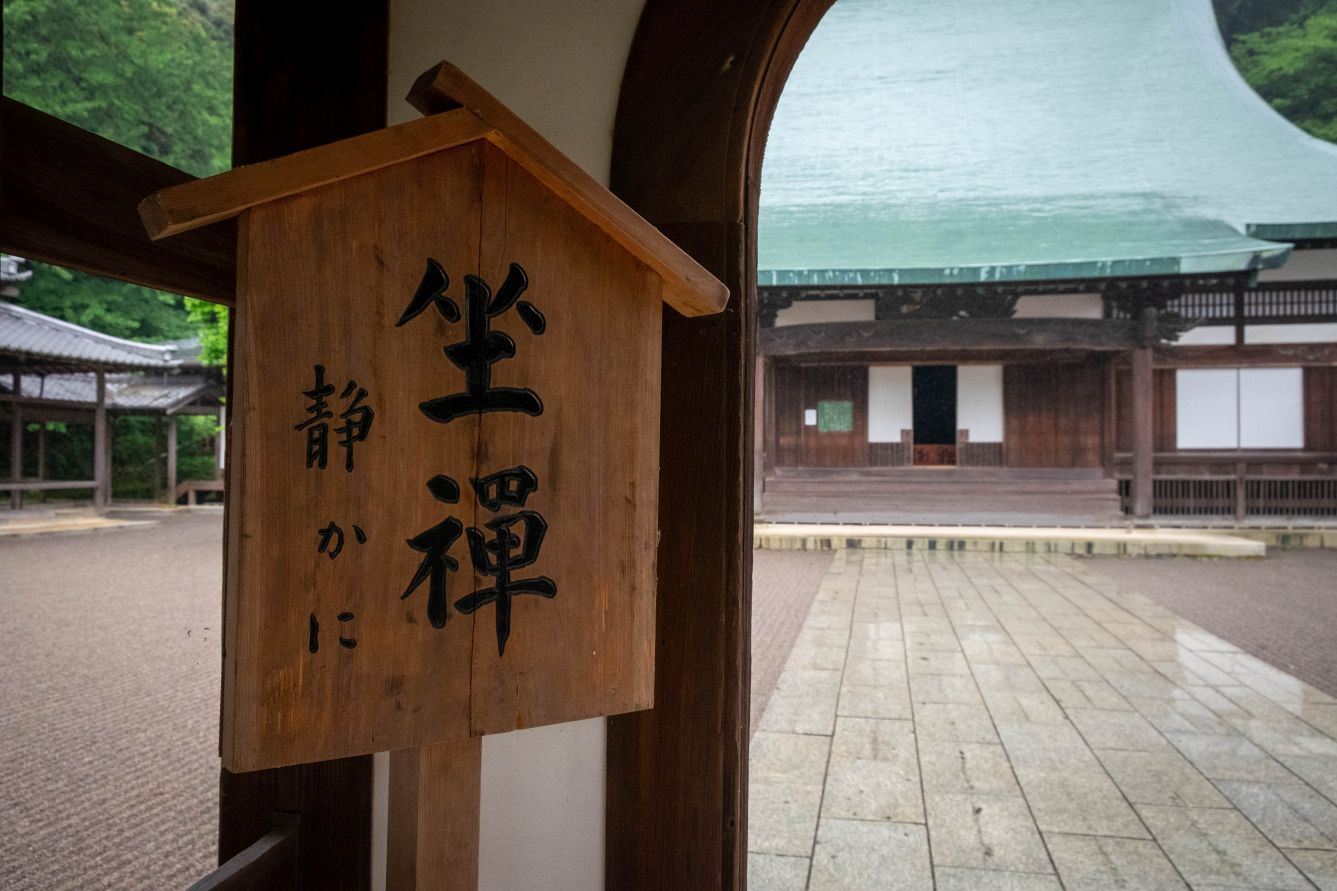Zuiō-ji Temple
Home » Zuiō-ji Temple
Zuiō-ji Temple
Zuiō-ji is a Buddhist monastery located at the foot of the Shikoku Mountains to the south of Niihama. It belongs to the Sōtō Zen Buddhist sect. In winter, trainee monks from the temple go into the city begging for alms. From the temple grounds, you can look over Niihama and the Seto Inland Sea.
What to see
Many visitors drive straight up to the car park near the main enclosure of the temple, but it’s best to enter the temple through the stone gateway further down the hill. The approach passes through a wood of interesting trees interspersed with old gravestones. At the top of the path is an elegant stone lantern, with a stone bridge heading towards the right. Up a few steps is a large mossy plaza planted with cherry trees. Here there are statues of a Zen master, a seated Buddha, and a Kannon.
A ramp leads up to the massive wooden main gate, with a tile roof including some impressive dragons. Steep stone steps lead up to the two-storied bell and drum gate, an elegant structure with round windows. Corridors lead away to the right and left. A sign asks visitors to be quiet since meditation is going on.
The approach continues to the main hall directly ahead, with carefully raked gravel on either side. To the left of the enclosure is the monastery accommodation and Chōsen Hall, built to commemorate the people who died working in the nearby Besshi copper mines. To the right are temple offices.
A passageway to the left of the main hall leads to a pond and a huge gingko tree that was planted 800 years ago. It stands 27 metres tall. From here, steps lead up steeply to a shrine to Konpira with a belfry. On the mountain behind the temple, monkeys and other wild animals can often be seen.
The temple houses a magnificent, ancient rotating cabinet for sutras. Zuiō-ji is known for the beauty of its autumn foliage.
History
The temple was first built in 1448, when Matsuki Katsumura, the 11th lord of nearby Shōji Castle invited the monk Gettan to come from Kamakura and establish a temple for the repose of the spirits of his parents. During the conquest of Shikoku by Toyotomi Hideyoshi in 1585, Shōji Castle fell to the army of Kobayakawa Takakage, and the temple also was burned down. It was completely rebuilt in 1660 and Zen master Hakuō was despatched from Tokuunji Temple in Hiroshima to manage Zuiō-ji. In the spring of 1828, a fire broke out in the temple, and it again burned down. It took twenty years to rebuild it. In 1830, the priest’s quarters and temple bell were completed, followed by the main hall and monastery in 1847, and the main and inner gates and corridors in 1856. Zuiō-ji was established as a dedicated Zen monastery and place of meditation in 1897 during the Meiji period, and today the temple continues to fulfil this role. Currently, it holds the highest rank in Sōtō Zen Buddhism.
Zuiō-ji is closely related to the Besshi Copper Mine. The Orchid Tower at the former Besshi Mine was built to commemorate the 132 victims of a great fire that broke out in 1694. But with the abandoning of Besshi in 1918, the monument from the tower was moved to Zuiō-ji Temple and erected in the West Cemetery. In addition, the spirits of the victims of the great flood in 1899 are enshrined in the East Cemetery. Even now, a memorial service is held at the Chōsen Hall every October with the attendance of representatives of Sumitomo.
The buildings on the east side of Zuiō-ji house the Daitenrin sutra repository, a large octagonal cabinet holding sutras that rotates around its central axis. Just by rotating it once, it’s believed you can get the same benefits as reading the 2,000 or more volumes of the scriptures representing the complete Buddhist canon. The third Ashikaga shogun first requested the cabinet to be built at Tenmangu Shrine in Kyōto. This is because Yoshimitsu, who destroyed the influential military governor Yamana Ujikiyo in 1391, decided to dedicate the complete Buddhist scriptures to Kitano Tenmangu in Kyoto to pray for the soul of Ujikiyo. The task of copying the sutras was divided up between the emperor and aristocrats serving at the palace, generals and their direct vassals, and other military governors. The production of the magnificent rotating cabinet was completed around 1390, and it was held at the shrine for generations. With the decree separating Buddhism and Shintō issued by the new Meiji in 1884, the Buddhist sutras had to be removed from the Shintō Tenmangu Shrine. With the help of the Sumitomo family, it was moved to Zuiō-ji.
The Konpira Shrine in the precincts of Zuiō-ji was built to save local people the two days or more required to visit the Konpira headquarters in Kagawa. On the shrine festival days, worshipers flocked to this branch shrine and sumo wrestling was held in honour of the Emperor. In the post-war era, very few people regard Konpira itself as an important pilgrimage destination, and likewise, the branch temple is rarely visited.
Legends
One night in the late 1600s, the chief priest of Zuiō-ji roused the trainees and the sexton from their sleep shouting about a temple in Onomichi that was burning down. Since Onomichi is across the Seto Inland Sea from Niihama, it was impossible for the chief priest to know this. But they gathered pails, went to the temple pond, and cast a great deal of water in the direction of Onomichi, getting thoroughly soaked in the process. After a while, the chief priest declared, “Thank goodness, the fire is out. Let’s dry off and go back to bed!”. A few days later, they received a visit from a priest belonging to Tennei-ji Temple in Onomichi. He thanked them for all the water which put the fire out and saved the principle image from burning. This messenger was invited to eat, and during the meal, a trainee asked him, “How did you know the water was from Zuiō-ji?”. The messenger replied, “Along with the torrent of water that flowed in through the window, there was a big banner with ‘Zuiō-ji’ written on it.” The trainees were astonished.
Regarding the foundation of the Konpira branch shrine, it’s said that coins fell from the sky onto the mountain behind Zuiō-ji. The chief priest recognised this as a sign from Kotohira Daigongen that the deity would favour a branch shrine here.
Information
Name in Japanese: 瑞應寺
Pronunciation: zuiōji
Address: 8-1 Yamanecho, Niihama, Ehime 792-0835
Related Tours

Experience the most beautiful and interesting temples of the Shikoku Pilgrimage in seven days.

A tour for families or friends, staying in the most characterful kominka and ryokan of Shikoku.

Visit the most beautiful and interesting temples of the Shikoku Pilgrimage and walk the toughest trails.

